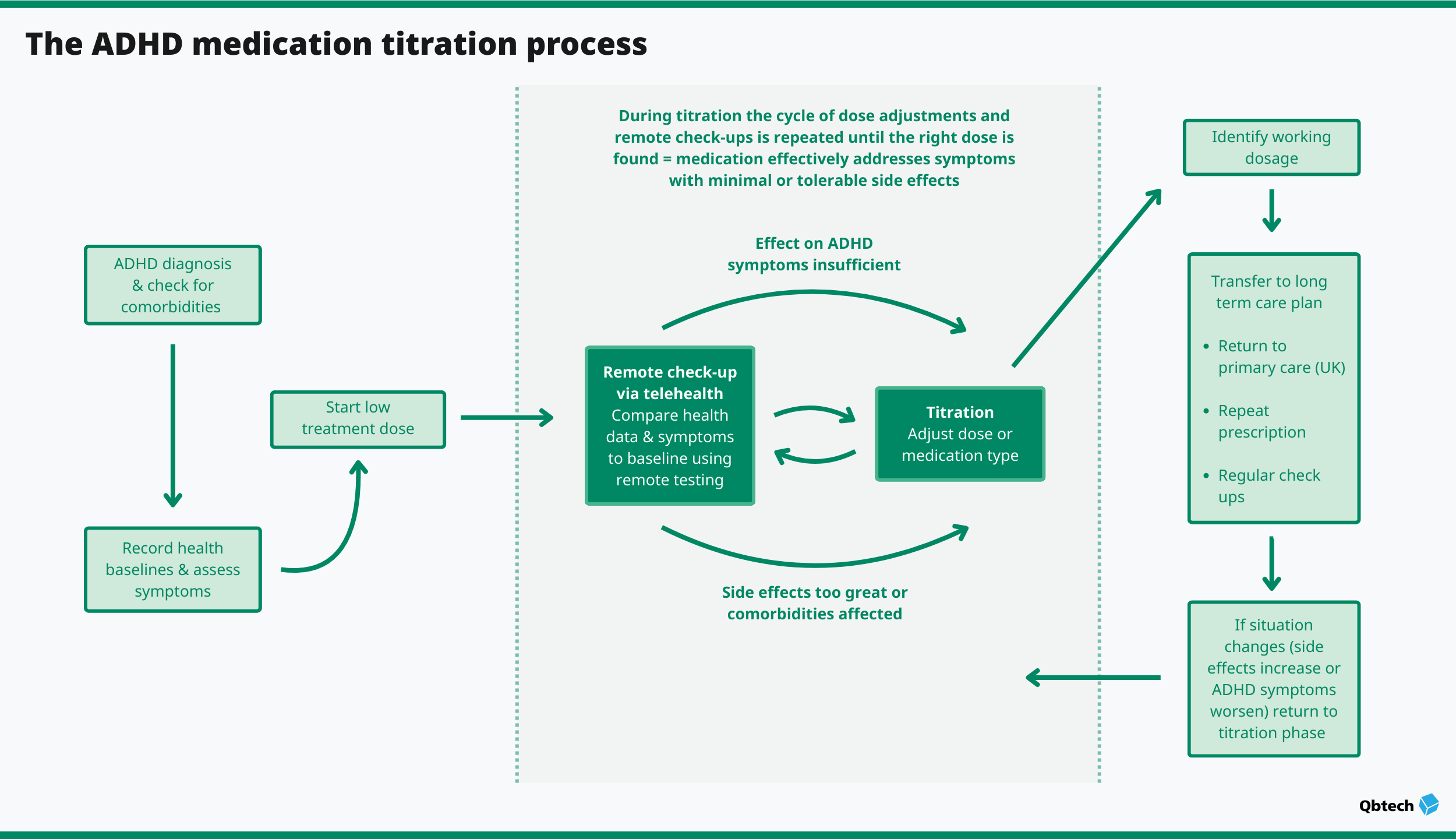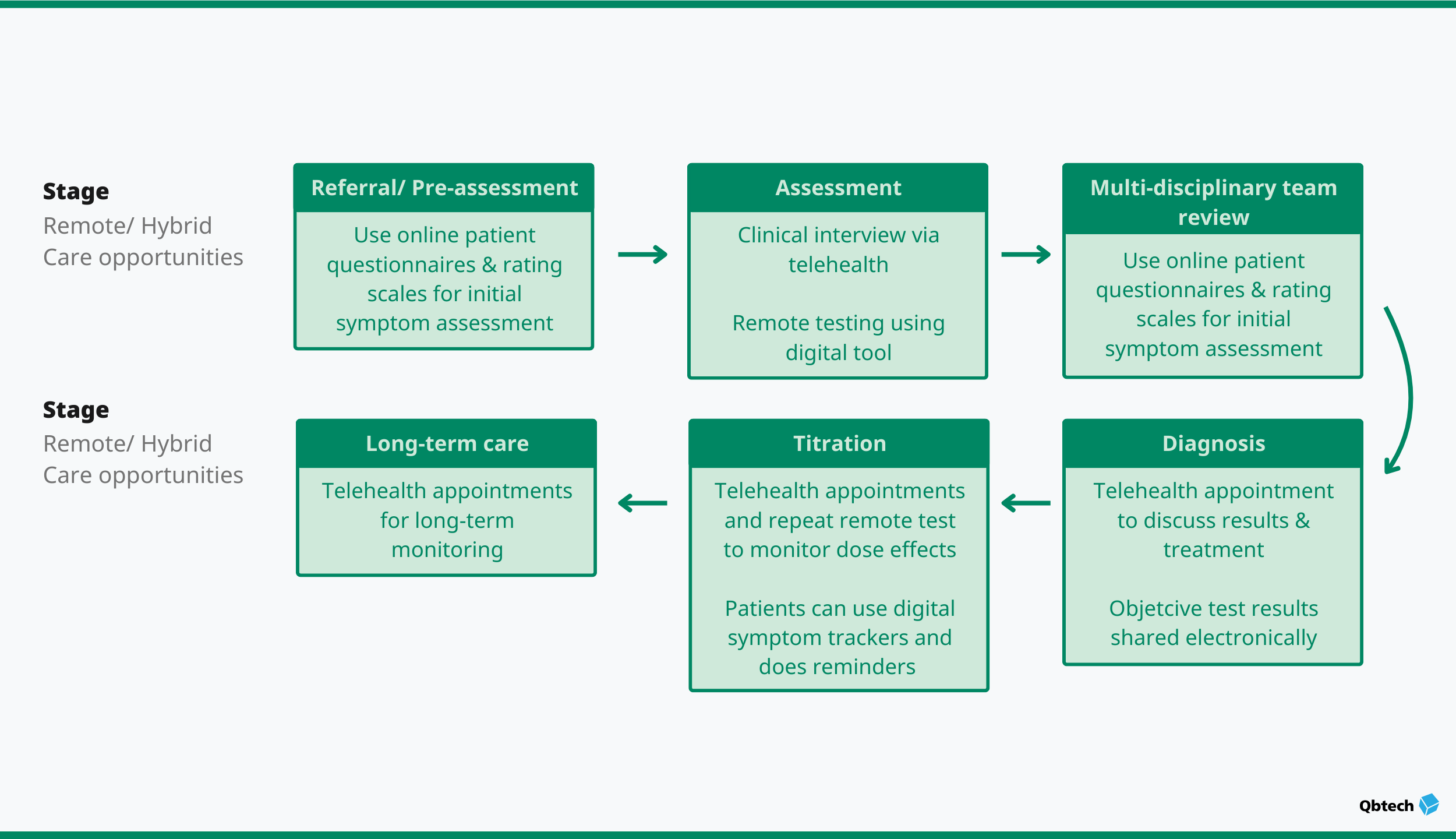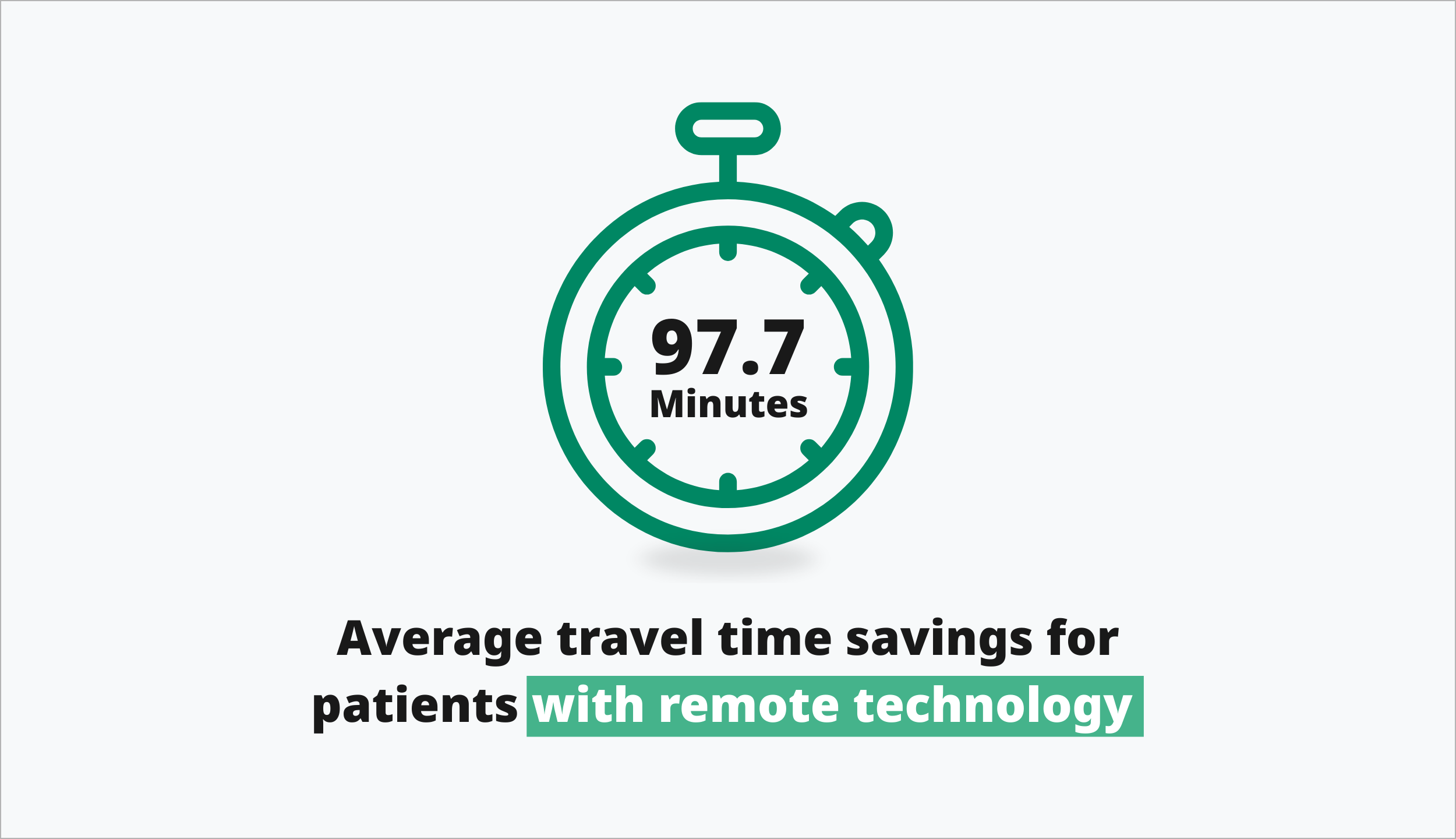Finding the right medication dose for a patient with ADHD often requires some adjustments.
This process of treatment titration is successful when a clinician finds the right dose for a patient, where their ADHD symptoms are managed and side effects are minimized. However, this can be a slow process, requiring several consultations and tests.
Managing treatment titration via in-clinic appointments can be challenging for both clinicians and patients, placing too many demands on already busy schedules. Remote testing and telehealth provide clinicians with the opportunity to titrate ADHD medications remotely, including via virtual and hybrid clinics.
The ADHD medication titration process
Titration is not a standardized process. It involves a cycle of dose adjustments, monitoring, and review until the right dosage is found. The challenge at the heart of ADHD treatment is simple: there is no universal “right dose.” Modern medication management utilizes tools like QbCheck, so clinicians can titrate with greater confidence and clarity.

ADHD titration checklists for clinicians
These checklists are provided to summarize the process of titrating remotely or in a virtual or hybrid clinic. They are non-exhaustive and included as a guide only. Titration should always be carried out at a clinician’s own judgement, and Qbtech does not hold liability.
ADHD medication titration: 2025 and beyond
Titration is a critical step in achieving treatment optimization, but it's also one of the most time-consuming and variable parts of the care pathway. Inconsistent titration practices can lead to missed therapeutic windows, reduced adherence, and patient drop-off.
In 2025, best practice for titration includes:
- Clear dose escalation protocols based on age, comorbidities, and patient goals
- Ongoing monitoring of response and side effects (objective and subjective)
- Shared decision-making to support medication adherence
ADHD medication management: the role of telehealth and hybrid care
Clinicians treating ADHD patients face growing demands on their time from long waitlists for assessment and treatment. In particular, the many small adjustments, regular clinical supervision, and weekly check-ins required during titration are very time-intensive. Studies have indicated that many clinicians consider this weekly clinic contact during titration to be “infeasible” and that “this timeline is rarely achieved.” Let's explore some of the unique benefits of virtual ADHD management.
Improved clinical and patient outcomes
Digital ADHD tests can be used to objectively measure symptom change following treatment. Sanyal et al. highlight the capacity of QbCheck to “facilitate treatment monitoring and dosage titration.”
Benefits of virtual technology during titration:
- Clinicians can see/treat more patients using less time and admin resources
- Removes physical (and psychological) barriers for patient attendance
- Improves patient accessibility and reduces travel and wait time
Monitor symptom improvement following medication treatment
A recent research study suggests that when objective measures, like those from QbCheck, are incorporated in an ADHD pathway, it supports guiding treatment decisions, aids in the remote monitoring of ADHD medication, tracking of ADHD symptom regulation, and optimizes treatment outcomes for patients.
"There are no grey areas. We can be more assertive and understanding of each individual. For example, seeing a patient’s QbCheck score drop from 98 to 3 after taking treatment is immensely gratifying. It’s proof of progress."
- Carl Ellis
Beyond dosage: using objective measures to personalize ADHD care
Titration is about more than simply getting the dosage of a medication right. The process is unique to each patient, as everyone metabolizes medication differently, so identifying the right type of medication is key. This decision is often informed by factors such as a patient’s age and whether they have other comorbid conditions.
Effective titration relies on clinicians having evidence of medication effect. Usually, this comes from parent or teacher assessments or rating scales. However, as clinician Dr James Wiley summarizes in a recent webinar, subjective measures may be unreliable or difficult to obtain, and there’s a strong need to incorporate objective data.
“In clinic, you often have parents or grandparents that don’t see the child during the bulk of medication effect, but a couple of days a week. Having an objective measure that is standardized can be extremely helpful in optimizing doses of medication.”
Managing prescribing regulations in a hybrid setting
Most ADHD medications are considered controlled substances in both the US and the UK. This means that clinicians must follow local guidelines on prescription and procedures.
Can clinicians prescribe ADHD medication via telehealth?
🇺🇸 In the US:
- Electronic prescriptions for controlled ADHD medications are allowed
- An in-person evaluation is required before prescribing
- This can be done by the prescribing clinician, or
- By a referring medical professional who has previously seen the patient in person
The 2023 DEA Telemedicine listening session highlights important considerations for clinicians prescribing via telehealth.
🇬🇧 In the UK:
- Electronic prescriptions for controlled ADHD medications typically require handwritten signatures
- If using the Electronic Prescription Service (EPS), an advanced electronic signature is acceptable
Titration essentials: choosing the right treatment for ADHD
First-line vs second-line medications
Stimulant medications are often recommended as the first-line treatment for ADHD, mainly because of their demonstrated efficacy in addressing ADHD symptoms quickly. Non-stimulant medications may be prescribed as a second-line treatment for ADHD if stimulants are considered unsuitable. Non-stimulants are slower-acting and may not prove as effective. However, they are used as a first-line treatment for ADHD patients with primarily emotional dysregulation.
Titration for ADHD patients with comorbid conditions
Patients with ADHD often have other conditions like anxiety, depression, or substance use disorder. Adjusting titration for comorbidities via telehealth or in virtual clinics works in the same way as it would in-clinic.
"In addition to the traditional subjective approach to diagnose ADHD, by utilizing QbCheck's objectivity, my level of confidence and decision making has significantly improved with regards to understanding patient's symptoms and initiating treatment modalities for newly diagnosed patients. The test is particularly valuable for those patients who are more complex and have other comorbidities."
- Bridgett Gant, PMHNP-BC, FNP-C
NICE recommends that “dose titration is slower and monitoring more frequent” for patients with neurodevelopmental disorders and mental health conditions. Increased monitoring for patients with comorbidities is easier to accommodate in pathways where remote technologies and appointments are used.
Patients with comorbidities may also benefit from combination treatments that supplement medication with non-medical interventions like behavioral therapy.
Titration practices for children vs adults with ADHD
Patient age is an important factor when deciding on a medication titration protocol. Whilst stimulants are recommended as first-line responses for both children and adults, titration for adults can be more challenging.
As well as being more likely to have comorbid conditions, adults are at greater risk of addictions, taking multiple medications with possible interactionshaving other conditions such as heart disease or hypertension.
All these considerations mean that dose adjustments are often slower and more incremental for adults, with a need for increased monitoring of effects.
Considerations and best practices for hybrid clinics
There are several best practices that clinicians can follow during titration via telehealth, or in virtual or hybrid ADHD clinics:
Schedule regular virtual follow-ups
Patients need frequent monitoring during titration. Schedule online appointments regularly with built-in reminders to aid attendance. Hybrid and virtual ADHD clinics can benefit from the reduced admin and streamlined nature of online appointments and optimize calendars to see more patients.
Make small, regular adjustments to dosages
As Dr David Aversa highlights, it’s usual practice to start on a low dosage and titrate up slowly. Several incremental changes are better than one large adjustment.
Gather developmental histories and patient data
Rating scales and patient feedback can be helpful for identifying the effect of a medication on ADHD symptoms. For child ADHD cases, seek input on treatment effect from parents and teachers.
Objective data from a digital ADHD test can supplement this subjective feedback and provide clinicians with quantifiable measures of medication effect on symptoms.
Consider patient sensitivity to symptom change
Patients may underreport improvements in symptom presentation. Again, an objective test can be used to mitigate this risk. A 2022 study found that using an objective test was more sensitive to medication effects than patient self-rating, at both one-month and six-month follow-up visits.

Prescribing for ADHD is rarely quick, and this staged titration process is necessary to find the right dose for a patient. As ADHD diagnostic technologies improve, there are continued opportunities for digital tools to support the titration process, and for hybrid and virtual clinics to facilitate a remote titration process that places less burden on clinics and patients.
Need a smarter way to manage ADHD medication titration?
Access our free, evidence-based Medication Titration Checklist, built especially for hybrid clinics.
